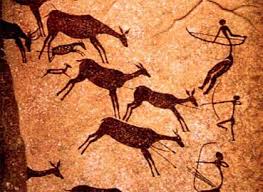Stamp: Pteranodon longiceps (Chad 2020)
Pteranodon longiceps (Chad 2020)
30 November (Chad ) within release Dinosaurs (2020:1) goes into circulation Stamp Pteranodon longiceps face value 800 Central African CFA franc
| Stamp Pteranodon longiceps in catalogues | |
|---|---|
| Yvert et Tellier: | Yt: TD 2770 |
Stamp is square format.
Although this issue was authorized by the Chad postal administration, it was not sold in Chad, but only distributed by Chad's philatelic agency Stamperija for distribution onto the philatelic market. This item was excessively produced making it of little to no philatelic value. Stamp perforated on 3 sides only.Also in the issue Dinosaurs (2020:1):
- Souvenir Sheet - Spinosaurus aegyptiacus face value 3,300;
- Mini Sheet - Various Dinosaurs face value 4*800;
- Se-tenant - Dilophosaurus wetherilli face value 4*800;
- Stamp - Dilophosaurus wetherilli face value 800;
- Stamp - Dilophosaurus wetherilli face value 800;
- Se-tenant - Pteranodon longiceps face value 4*800;
- Stamp - Pteranodon longiceps face value 800;
- Stamp - Pteranodon longiceps face value 800;
- Se-tenant - Stegosaurus stenops face value 4*800;
- Stamp - Stegosaurus stenops face value 800;
- Stamp - Stegosaurus stenops face value 800;
- Se-tenant - Tyrannosaurus rex face value 4*800;
- Stamp - Tyrannosaurus rex face value 800;
- Stamp - Tyrannosaurus rex face value 800;
|
Data entry completed
53%
|
|
|---|---|
| Stamp Pteranodon longiceps in digits | |
| Country: | Chad |
| Date: | 2020-11-30 |
| Print: | Offset lithography |
| Emission: | Commemorative |
| Format: | Stamp |
| Face Value: | 800 Central African CFA franc |
Stamp Pteranodon longiceps it reflects the thematic directions:
Animals are multicellular, eukaryotic organisms of the kingdom Animalia (also called Metazoa). All animals are motile, meaning they can move spontaneously and independently, at some point in their lives. Their body plan eventually becomes fixed as they develop, although some undergo a process of metamorphosis later on in their lives. All animals are heterotrophs: they must ingest other organisms or their products for sustenance.
Dinosaurs are a diverse group of reptiles of the clade Dinosauria. They first appeared during the Triassic period, between 243 and 233.23 million years ago (mya), although the exact origin and timing of the evolution of dinosaurs is a subject of active research. They became the dominant terrestrial vertebrates after the Triassic–Jurassic extinction event 201.3 mya and their dominance continued throughout the Jurassic and Cretaceous periods. The fossil record shows that birds are feathered dinosaurs, having evolved from earlier theropods during the Late Jurassic epoch, and are the only dinosaur lineage known to have survived the Cretaceous–Paleogene extinction event approximately 66 mya. Dinosaurs can therefore be divided into avian dinosaurs—birds—and the extinct non-avian dinosaurs, which are all dinosaurs other than birds.
Prehistory, also called pre-literary history, is the period of human history between the first known use of stone tools by hominins c. 3.3 million years ago and the beginning of recorded history with the invention of writing systems. The use of symbols, marks, and images appears very early among humans, but the earliest known writing systems appeared c. 5,200 years ago. It took thousands of years for writing systems to be widely adopted, with writing spreading to almost all cultures by the 19th century. The end of prehistory therefore came at different times in different places, and the term is less often used in discussing societies where prehistory ended relatively recently.



